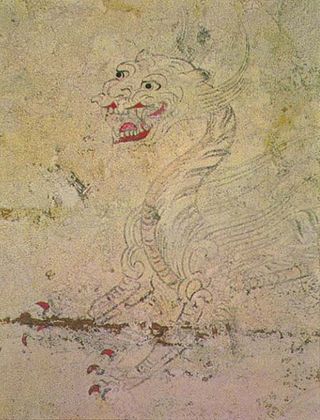Top Qs
Timeline
Chat
Perspective
White Tiger (mythology)
One of Four Symbols of Chinese mythology From Wikipedia, the free encyclopedia
Remove ads
The White Tiger (Chinese: 白虎; pinyin: Báihǔ), is one of the Four Symbols of the Chinese constellations. It is sometimes called the White Tiger of the West (西方白虎; Xīfāng Báihǔ). It represents the west in terms of direction and the autumn season.
It is known as Byakko in Japanese, Baekho in Korean, and Bạch Hổ in Vietnamese.

Remove ads
Seven Mansions
As with the other three Symbols, there are seven astrological "Mansions" (positions of the Moon) within the White Tiger. The names and determinative stars are:[1][2]
Remove ads
See also
References
Wikiwand - on
Seamless Wikipedia browsing. On steroids.
Remove ads

